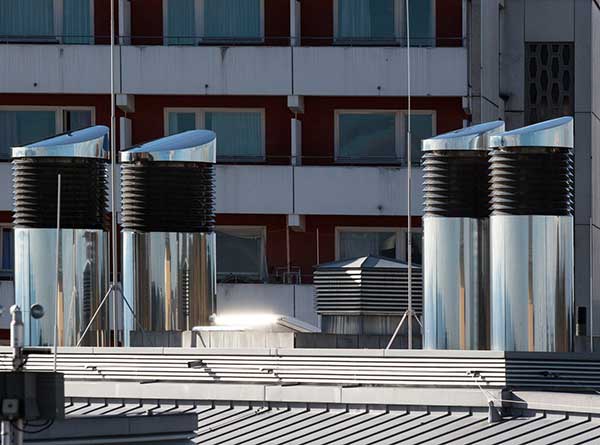Disclaimer: The information on our website is provided for general information purposes only. We make no representations or warranties of any kind, express or implied, about the completeness, accuracy, reliability, suitability or availability with respect to the website or the information contained on our website for any purpose. Any reliance on such information is therefore strictly at your own risk and we are not liable for any damages or losses arising out of or resulting from your reliance on any information contained on our website.
A sheet metal worker installs or fabricates products that are made from thin metal sheets like ducts in air conditioning systems, heating systems, metal roofs, siding, and gutters. They also may fabricate nonmetallic materials for plastic board or fiberglass.
Watch a video to learn what a sheet metal worker does:
How to Become a Sheet Metal Worker
Sheet metal workers typically require a high school diploma and then enter into an apprenticeship program after graduation. Apprenticeship programs are offered by businesses and unions. Some offer preferred entry for military veterans. An apprenticeship program requires 1,700-2000 hours of on-the-job training that is paid and another 144-320 hours of technical instruction. Apprentices learn blueprint reading, building code requirements, math, and first aid and safety practices. Some training may include welding. It may be helpful for one interested in this career to take classes in high school in classes such as mathematics, welding, blueprint reading, and mechanical drawing if possible
Some technical schools offer programs with instructions in metalworking and welding. Also some manufacturers partner with local technical schools to provide training programs that are specific to their factories. It is not required for an apprentice to be licensed or certified, however, it may be advantageous to prove one’s competency. Check with your state to see how to get certified.
Job Description of a Sheet Metal Worker
The duties of a sheet metal worker typically include selecting the appropriate type of sheet metal. However they also use nonmetallic products as well such as fiberglass or plastic boards for some jobs. They mark dimensions, measures, and reference lines. They drill holes to fit rivets, bolts, and screws. He or she has the job of installing metal sheets with supportive frameworks. They may need to fabricate or alter parts at the worksite.
A sheet metal worker maneuvers and anchors large sheet metal parts and fasten joints or seams by soldering, welding, riveting, or bolting. There are a few types of sheet metal workers so each job may have different requirements and job performances. Specialties include but are not limited to fabrication, installation, maintenance, balancing, and testing. Sheet metal workers often work in small assembly shops, manufacturing plants, or at construction sites. Some even work outdoors and are exposed to all types of weather. There is a high risk of injury due to the nature of the job duties included in this career field. Injuries include cuts, burns, falls, and strained muscles, however, many companies have safety procedures and protocols to avoid these injuries as much as possible.
The increase of industrial, commercial, and residential structures will provide good employment opportunities for sheet metal workers. Those with welding experience and certification will have the best prospects. They have a physically demanding job often standing for long periods of time, squatting, bending, climbing, and often lift heavy materials. They typically work on a full-time basis.
Sheet Metal Worker Career Video Transcript
A thin sheet of metal in the hands of a sheet metal worker has the potential to become a rain gutter, a duct to carry warm air throughout a building, or a precision part for medical equipment. Different job settings require different tasks for sheet metal workers. In construction, they are in charge of the heating, ventilation and air conditioning systems known as HVAC. They install ductwork, clean and repair it, and adjust systems to ensure proper airflow. They also install sheet metal roofs, siding, and gutters at homes and buildings. These sheet metal workers choose the correct materials, measure, cut, and drill before installing finished pieces. They are skilled at welding seams, bolting parts into tight corners, and riveting pieces high up.
Taking precautions against cuts, burns, and falls is essential. In manufacturing, fabrication or precision sheet metal workers operate machinery that does the measuring, cutting and fabrication to make precision sheet metal parts used in industries from power generation to medical device manufacturing. They may program the computers that control the equipment. In construction and HVAC, sheet metal workers learn their trade through a 4-5 year apprenticeship that combines technical and paid on-the-job training. Those in manufacturing often learn on the job or at a technical school. Most sheet metal workers have a high school diploma or equivalent.
Article Citations
Bureau of Labor Statistics, U.S. Department of Labor, Occupational Outlook Handbook, Sheet Metal Workers.
National Center for O*NET Development. 47-2211.00. O*NET OnLine.
The career video is in the public domain from the U. S. Department of Labor, Employment and Training Administration.


